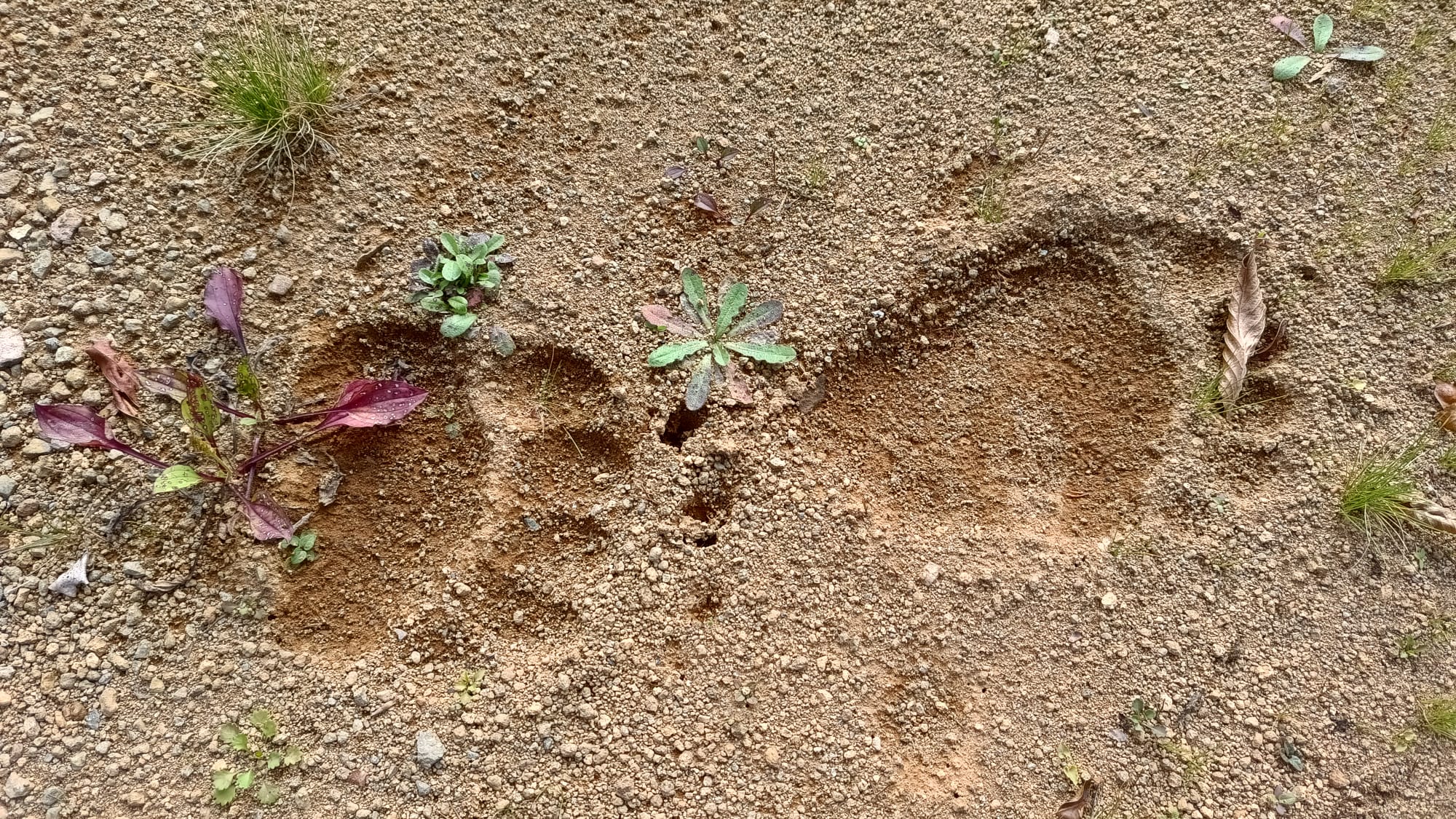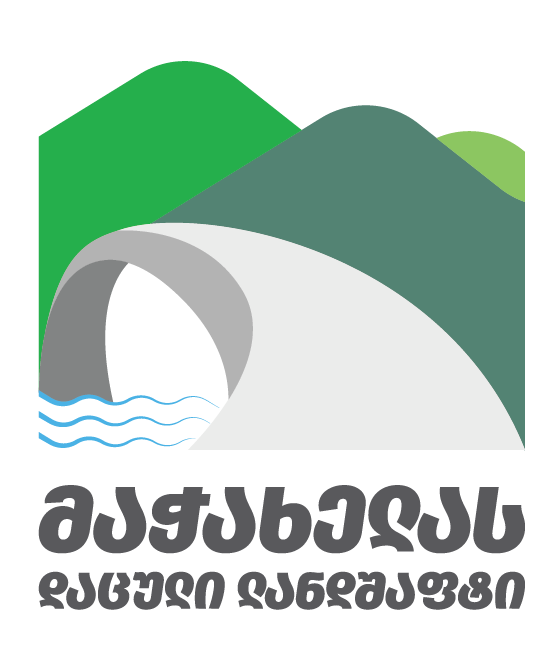Trees
Medvedev’s Birch (Betula medvedewii): Listed in Georgia’s Red List as a vulnerable species, this is a deciduous tree of the Betulaceae family, growing up to 20 meters in height. The bark is white or brown, and the round leaves have entire edges. It reproduces by seeds and root suckers. Its sap, rich in fructose and glucose, is used for fermenting beverages and making syrup. Buds and leaves have medicinal applications.
Pontic Oak (Quercus pontica): Another vulnerable species in Georgia’s Red List. It is a tall shrub or small tree (5-7, occasionally 10-12 meters) that often grows as an understory plant. The wood is hard and decorative, although it seldom bears viable acorns due to harsh winter conditions.
Common Yew (Taxus baccata): Listed as vulnerable, this is the only conifer species without cones. It has reddish-brown bark and dark green, flat needles. Known for its longevity, it is slow-growing, and its needles and seeds are toxic. This species is rare in Georgia, found in small numbers, with the world’s largest natural yew forest covering 700 hectares.
Chestnut (Castanea sativa): A deciduous tree from the Fagaceae family, growing up to 30 meters with a broad crown. Its leaves are dark green on the top and smooth, and the tree is rich in glucose and fructose, being the only nut with vitamin C content. It is protected in Georgia’s Red List.
Hartwiss’s Oak (Quercus hartwissiana): A rare and ancient species in the Georgian flora, reaching up to 25 meters. It is fast-growing and has high-quality decorative wood, found mostly in Western Georgia.
Caucasian Walnut (Juglans regia): Represented in Georgia’s Red List, this deciduous tree reaches 20-30 meters in height. It is drought-resistant and begins bearing nuts at 12 years of age, continuing until 200. Its nuts contain fats, proteins, vitamin B1, and provitamin A.
Bearded Alder (Alnus barbata): A deciduous tree found throughout Georgia, it grows on river terraces and forms alder groves. Its pollen, when mixed with sugar, is used as bee food in early spring.
Oriental Spruce (Picea orientalis): Listed in the IUCN Red List as Least Concern (LC). This tree reaches 60 meters in height and has a diameter of up to 2 meters, with a dense, compact crown. It grows at 1,300-2,100 meters above sea level and prefers mixed forests.
Caucasian Hornbeam (Carpinus caucasica): This deciduous tree reaches up to 20-25 meters and is widely distributed in the lower and middle mountain belts of Georgia.
Oriental Beech (Fagus orientalis): Growing up to 40-50 meters, this tree has smooth, light-gray bark. It produces triangular nuts that ripen in September.
Common Maple (Acer campestre): Used medicinally for its bark and sap, this deciduous tree grows 15-25 meters tall with gray-brown, longitudinally cracked bark. Its leaves typically have five lobes (sometimes three), and it is widespread in Georgia’s deciduous forests.
Shrubs
Epigea (Epigea sp.): A unique evergreen shrub that grows in moist areas and is found exclusively in Adjara and nearby parts of Turkey. Epigea is a rare ancient endemic listed in Georgia’s Red List.
Ungern’s Rhododendron (Rhododendron ungernii): A tall evergreen shrub reaching 3.5-6 meters, mainly found in the Machakhela, Mtirala, and Kintrishi Protected Areas within Adjara. It grows at elevations of 700-2,200 meters and is endemic to Colchis, listed as a vulnerable species in Georgia’s Red List.
Pontic Rhododendron (Rhododendron ponticum): An evergreen shrub or small tree with leathery, glabrous, lanceolate leaves up to 30 cm in length. Its flowers are violet or purple-lilac, blooming from April to May. It is found in the Machakhela, Mtirala, and Kintrishi Protected Areas, as well as parts of the Colchis lowlands.
Yellow Azalea (Rhododendron luteum): A deciduous shrub 1-2 meters tall, with thin, ovate leaves that turn orange-red in autumn. The flowers are yellow or orange, found throughout Georgia from lowlands to subalpine zones.
Colchic Boxwood (Buxus colchica): This evergreen shrub or small tree reaches 9-10 meters, with yellowish bark and quadrangular young branches. As a relict species, it is endangered, listed as vulnerable in both the Georgian and IUCN Red Lists.
Sorbus graeca (Ampura, Mapura, Pura-Pura, Bearberry): A shrub or small tree from the Rosaceae family with rounded, white-felted leaves and raspberry-colored fruits. Traditionally, it was used as a flour supplement in bread making.
Colchic Hazel (Corylus colchica): This birch-family shrub grows up to 1 meter in height and is endemic to Western Georgia (Colchis), typically found on limestone at elevations of up to 2,300 meters. It is a vulnerable species listed in the Red Lists of both Georgia and international organizations.
Large Mammals (Carnivores)
Brown Bear (Ursus arctos): The largest carnivore in Georgia, listed as endangered in the Georgian Red List. Shy and cautious, the bear avoids human contact and primarily consumes plant-based foods, along with some animal products. Bears accumulate fat in preparation for a winter sleep lasting from 3 to 6 months.

Eurasian Lynx (Lynx lynx): This feline has striking velvet-like spotted fur and is the largest wild cat in Georgia. Known for its stealth, it is extremely difficult to observe. The lynx is critically endangered in Georgia’s Red List.
Badger (Meles meles): A member of the weasel family, the badger is beneficial due to its diet of harmful insects. It digs burrows and eats both plant and animal foods.
Wolf (Canis lupus): Highly intelligent and adaptable, wolves are widespread predators in Georgia, eating insects, small animals, and larger prey. Although they share ancestry with domestic dogs, human activities have driven them to remote forests and mountains.
Pine Marten (Martes foina): This small carnivore has a body length of 40-60 cm, with nearly half of that length in its tail, which aids in agility. The soft, thick fur provides insulation and flexibility. A white-throated subspecies can be found in the national park.
Golden Jackal (Canis aureus): Known as a scavenger, the jackal helps prevent the spread of diseases by consuming carrion. Although it can sometimes carry diseases, it remains shy and wary of humans.
Herbivores
Chamois (Rupicapra rupicapra): Known for its slender build and long neck, the chamois has curved black horns. Curious by nature, chamois are often easy targets for hunters due to their inquisitiveness. They are listed as endangered in Georgia’s Red List.
European Roe Deer (Capreolus capreolus): A member of the deer family, this slender, elegant animal has a body length of up to 150 cm, with males weighing up to 55 kg. The roe deer can be found in nearly all protected areas of Georgia, including Machakhela National Park.
Wild Boar (Sus scrofa): Highly active, wild boars are known for their rapid movements and prolific breeding. They mark territory and often move in groups. Wild boars feed on nuts and roots in winter.
Caucasian Squirrel (Sciurus sp.): This mammal is agile and active, often seen on trees or trails, gathering food for winter. Listed as vulnerable in Georgia’s Red List, the squirrel has dense, soft fur.



